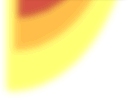

Humanising Language Teaching
Year 2; Issue 5; September 2000
Mapping a table - Primary
By Eleanor Watts, UK
| Time: | 30 minutes |
| Ages: | 4-8 years |
| Level: | Beginner |
| Materials : | a whiteboard or chalkboard, paper, coloured pencils, objects from the children's own pencil cases, e.g. a rubber, pencil sharpener, ruler |
| Focus: | 1) Learning to describe the positions of things (left, right, middle,
top, bottom) |
This early mapping activity can be great fun for beginners and helps to establish the idea that a map is a place viewed from above. It is easy for young children to understand a map of their own table because they can look down at it and see the pattern of the objects they have placed there.
Preparation
Clear your own table (or, if it's very cluttered, another one nearby!). Ask the children to take two pencils (perhaps red and blue), a rubber, a pencil sharpener and a ruler from their pencil cases. Alternatively, you can substitute any other common classroom object for these. Tell your pupils to clear their own tables completely.
Draw a large rectangle on the chalkboard or whiteboard. Practise the use of the words left, right, middle, top and bottom by pointing to the relevant parts of the board.
Procedure
- Ask the children to guess what the rectangle on the board is. Lead them to
suggest that it is a map of the top of your table as you look at it from above.
- Lay a pencil on the left of your table. Make sure that you are facing the same
direction as the children so that your left is their left. Ask them to tell you where it
is (ie on the left of the table). Then ask a child to show you where it would go on
the map of the table you have drawn on the board. Draw a picture of the pencil on
the left of the rectangle.
- Follow the same procedure with the other objects, placing one in the middle, one
at the top, one on the right and one at the bottom.
- You should by now have drawn on the board a map representing the surface of
your table. It might look like this:
- Ask the children to work in groups with other children around their table.
Get them to re-create the map on the board. Explain that they will do it
on their own tables with their own pencils, rubbers, pencil sharpeners and
rulers.
Comment
You can follow this up with another lesson in which the children create their own maps with classroom objects and draw maps of their own designs - so the maps of each table will differ from each other. You could then write a substitution table on the board like this:
The blue pencil at the top The red pencil at the bottom The rubber is in the middle of the map. The pencil sharpener on the left The ruler on the right
The children can then write about their maps and the results can be displayed on the wall.
Rationale
This activity helps children to make a clear connection between the reality of objects positioned on a table and the abstraction of a map.